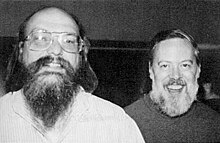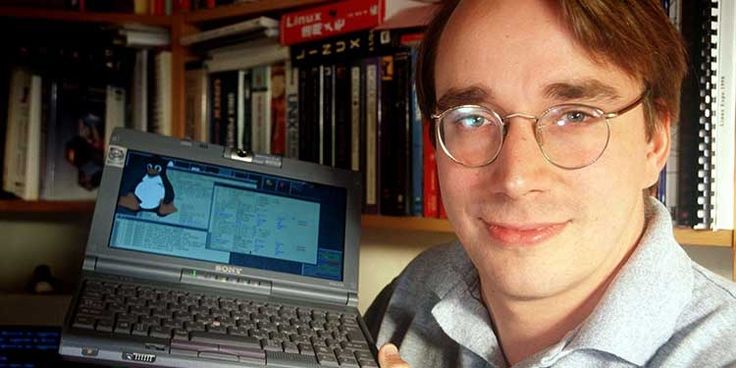
DAJIX - 26 OCT 2023
Linux is one of the biggest technical projects the world has ever seen. Since 2005, over 14,000 individual developers have contributed code to the project. In fact, it is so big that in 2003, Wired magazine speculated that it could be the biggest collaborative project in human history!
The story of how Linux grew to this point is an interesting (albeit long) one, so in this post I will give you an overview of the start.
The year is 1969. Two guys named Ken Thompson and Dennis Ritchie started working on a new operating system together, which came to be known as Unix. Unix quickly grew, and it became very popular for academics, and not much later businesses.

After that, the Unix source code started being sold to more companies and universities, who in turn made their own Unix operating systems. These included the University of Berkeley’s BSD (keep an eye on this one), System V, HP-UX (one of the few that is still around today), SunOS, Xenix and AIX. Since all these versions of Unix were incredibly similar but had small differences making software incompatible between them, this started a time period now known as the Unix Wars. All the different Unix operating systems were fighting to become the main, standard Unix.
During the 80s, a guy called Richard Stallman founded a project called GNU, which is a recursive acronym for GNU’s Not Unix. His goal was to create a fully free alternative to the big operating systems of the time. When Stallman says free, he does not mean free as in money, but free as in freedom. In his words, this means “the users have the freedom to run, copy, distribute, study, change and improve the software”. In practice, this means that the software’s source code has to be publicly available, and under a GNU-approved open source license (preferably their in-house GPL license).

Stallman began work on his free Unix clone with software like Bash (an open source clone of the Bourne shell featured in most Unix systems), Emacs (a powerful text editor), and Hurd (a kernel for the GNU operating system).
In 1991, a young developer at the University of Helsinki called Linus Torvalds began working on a MINIX (another Unix operating system) clone for his own 386 computer.
Hello everybody out there using minix -
I’m doing a (free) operating system (just a hobby, won’t be big and professional like gnu) for 386(486) AT clones. This has been brewing since april, and is starting to get ready. I’d like any feedback on things people like/dislike in minix, as my OS resembles it somewhat (same physical layout of the file-system (due to practical reasons) among other things). I’ve currently ported bash(1.08) and gcc(1.40), and things seem to work. This implies that I’ll get something practical within a few months, and I’d like to know what features most people would want. Any suggestions are welcome, but I won’t promise I’ll implement them :-)
Linus (torvalds@kruuna.helsinki.fi)
PS. Yes - it’s free of any minix code, and it has a multi-threaded fs. It is NOT portable (uses 386 task switching etc), and it probably never will support anything other than AT-harddisks, as that’s all I have :-(.
— Linus Torvalds

This project became the Linux kernel, which rapidly grew in popularity online. Torvalds released the source code publicly, originally under its own custom license, but later changing to the GNU Public License.
Using the Linux kernel with the GNU tools (which were quickly ported over), you could make a fully functional operating system, which is often referred to as GNU/Linux.
From here, Linux continued to grow to the point where it is today. I might follow this up with another article on what happened from here some day, if there is any interest.